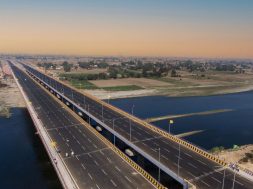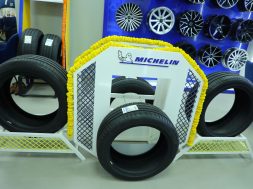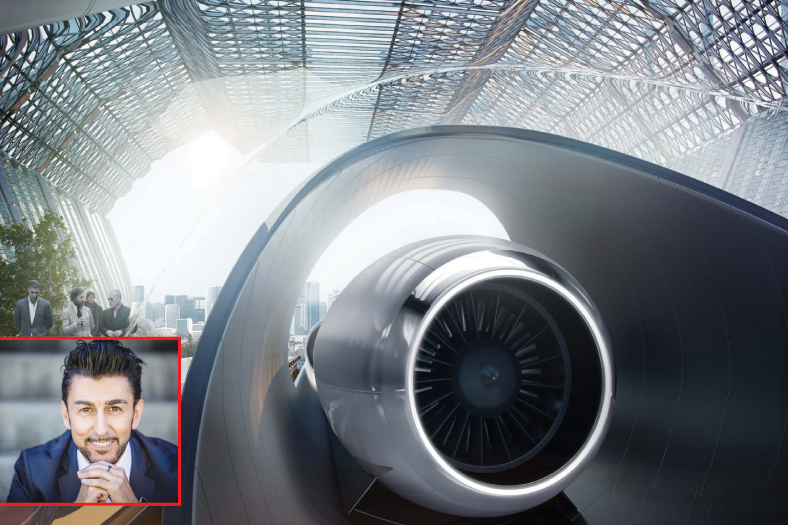Green Redefined [Jan 2012]
“From the green aspect, we don’t need to join a wood to another wood. We need a commitment, for us we need beautiful spaces to develop for kids, but at the same time to protect the building from sun and offering a new vision to the market”, said Antonio Gnisci, Director, FGTecnopolo
Kinetic FGTecnopolo, a JV between Kinetic and FGTecnopolo, was set up in July last year. How significant is the joint venture for Kinetic as well as FGT?Kinetic FGTecnopolo is the 50:50 joint venture between two different companies with an aim to develop something new in the market. Kinetic Communications, an arm of Kinetic Group specialises in engineering services whereas FGTecnopolo of Italy is the leading architectural and engineering services group.
The JV had its roots since a very long time. Therefore we decided to approach the market together. Kinetic also has a real estate approach where we have JV with Hyundai called Kinetic Hyundai, with elevators for parking. This way we are managing a common vision that is a JV trying to develop a business in architecture. We are trying to develop a design centre in the headquarters of Kinetic.
The joint venture company does not sell any products and solutions rather sells ideas.
What kind of ideas are you selling? India is going through a phase of tremendous development. The country is facing a boom of opportunities, so we are facing a lot of opportunities in infrastructure planning and master planning for many developments basically in Delhi and Mumbai.
Have you been able to penetrate the public sector infrastructure projects as the Government plans to invest around 1 trillion dollar in the next five years?Public sector infrastructure development is basically into large projects in the areas of roads, airports, railways etc. Though we have specialisation in these areas, at present we focus more on the private sector, more on town planning and architecture. In India, it is much difficult to penetrate in to public sector and play a leading role till you have a strong base. Comparatively, it is much easier to focus on the activities related to creating contacts with the private sector. In India, there are many established players with similar approach, why should the project developers come to you?We always leverage on some aspects to differentiate ourselves from other companies in order to be competitive in the market. Being an Italian company, we are well-known as a designer for our fashion, history, architecture – so we have a track record to our advantage. At the same time, our services are slightly different from the other companies because of two distinctive things; one is the fact that we support unique designs. In our company we have separate departments which take care of different aspects of architecture and engineers so we can offer 360 degree consultancy putting everything that include architects, interior designers, corporate design, structural designer, MEP engineer and transportation system and everything related to the urban development and architecture under one umbrella.
On the other hand, we have a vision in which we don’t want to deliver on a concept theory rather we would like to be present to follow a project which is very typical of our approach. We always deal very much with our clients. We want to establish a direct contact with the client and develop each and every project, finding tailored solutions for every individual project. We follow an approach unlike architecture companies which is to approach much closer to clients and we believe that this is something which will be appreciated in India. There are lot of international companies in the market who only deliver concepts then the developers adapt the concept to their situation and develop the projects to any situation. We found that these two aspects will give us ample opportunities in the Indian market.
We can offer some specific designs that meet the clients’ needs and in the city for instance we have a culture which is based on experiences. We can make a design not only by making geometrical developments or making higher building along the road, we can also offer an experience of city, talk about different technology to the client which is very useful in India. Maybe this is the difference. By means of our experience, we can offer fresh new ideas of a city functions.
In the near future, do you have any plan to get into big infrastructure projects that you were talking about?When you enter the market you have to find a way in which you can settle down in the country. Therefore, we have decided to work in the architecture sector with the private players and started with significant projects. On a later phase, we will study the public sector and if we see that we can add some value to the sector then surely will venture into it. As of now we need to establish ourselves with a good number of opportunities in hand.
Is it very safe to start with small developers instead of going for public sector?As far as our business is concerned, we feel the public sector in India is difficult to approach because one needs to approach the public bodies really getting involved in the government domain. In addition, the public sector is more competitive and we have to bid regularly as one cannot win a bid only doing one bid a year and bids always need good investment. Therefore, one has to be very consistent in doing that.
What kind of responses have you received so far?The response that we got from the Indian market has been very encouraging. We are in a situation in India where the urbanisation is really booming. According to the planning commission, there would be massive movement of people from village to cities and towns. It is expected that more than 300,000 million people would be moving from villages to cities and towns. So we are in the phase in which more and more cities are to be built.
Today, the whole world is watching India in order to see how Indian society approaches this concept of building new cities because it’s not the matter of making a double Mumbai or double Delhi it is a matter of building cities. We have seen what’s going on in the Delhi-Mumbai Industrial Corridor with a lot of new development both industrial and residential.
How do you see the current development status in India?Lack of planning is one of the major problems hampering the development in India. Places like Gurgaon, Mumbai, Navi Mumbai are examples of major developments. However, the developers seem to develop a single pocket of land without having a broader idea of developing cities. This issue in India could only be approached by some initiatives by the policy makers that can plan the cities according to their need.
Today, India needs mass development in terms of housing and urbanisation. What is your current strength and what kind of capacity are you planning to expand in the next five years?India is witnessing a massive development and is in a phase in which there is a need for lot of office space. We believe, our approach has to be very flexible, articulated and we need to take into consideration lot of aspects so we don’t believe that there is one way to stop the problem. We don’t believe that green city is the future, in some way it has to be articulated in a really wider approach. We see a lot of glass buildings and glass towers in cities like Mumbai for instance and I believe that in such a case it’s a situation of ethic, using renewable energy is not enough for an accessibility project. Having a developer with a green approach using some scientific technologies for saving energy is not enough. It is very important to integrate the vision to the whole system of the world. The use of glass in a tower in Mumbai is not the right way to save energy where the temperature is over 30 degrees throughout the year. Therefore, the awareness of the material of the building is necessary.
In order to have an ethical approach we have to consider all the approach of design and this is something what we would like to consider in the next five years that we try to offer to the market. We don’t believe that it is feasible to use something to make green wash of the project; we have to be very consistent in our approach to the city and the design.
Could you brief us about your ‘Green’ approach?Our green approach is more or less cutting edge system of technology because we have to be very much approachable in our technology. As ours is an international approach, everyday there is new technology developing like the photovoltaic system, renewable energy etc. We have to consider as much as we can. In the case of taking care of technology, we need to consider the simple architectural elements like orientation, materials efficiency in order to get the maximum efficiency.
From the green aspect, we don’t need to join a wood to another wood. We need a commitment, for us we need beautiful spaces to develop for kids, but at the same time to protect the building from sun and offering a new vision to the market. I definitely think, we should take into consideration the new progress from the past. We see a building that is good in terms of insulation, green space around in terms of approaching, and way of living is very coherent with the history and religion. This is the approach that has to be innovative and very natural connected to the history of the place.
5
Cookie Consent
We use cookies to personalize your experience. By continuing to visit this website you agree to our Terms & Conditions, Privacy Policy and Cookie Policy.






